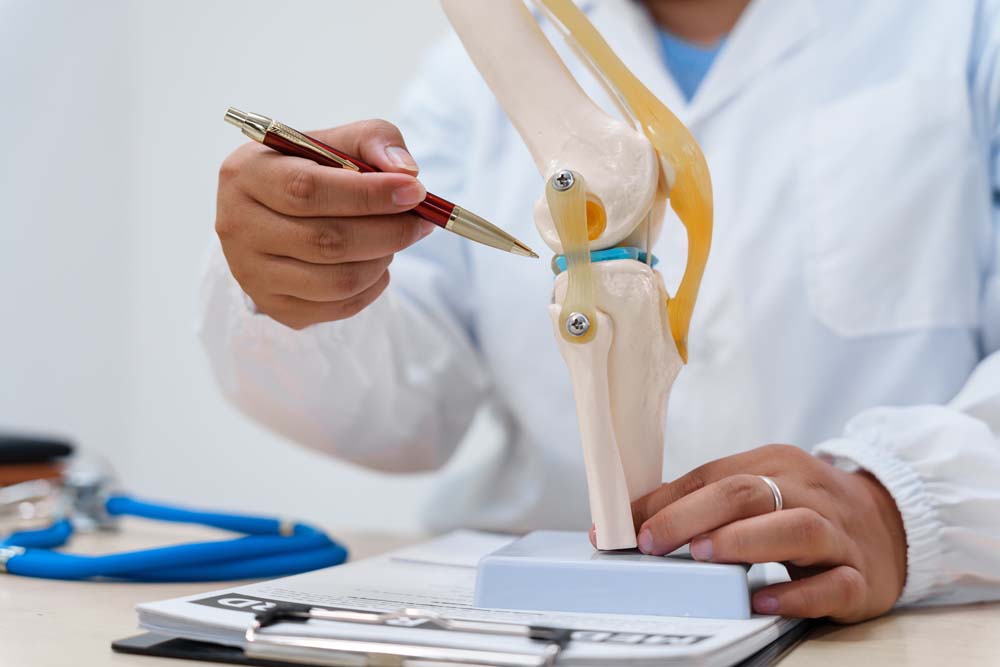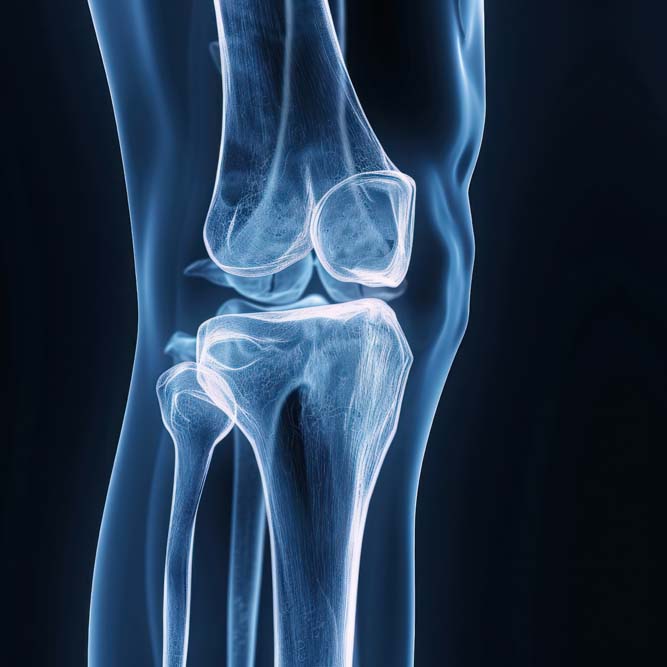
If you have a torn knee ligament, you may feel pain, instability, and limited mobility. At Impact Medical Group, we’re here to help you understand your treatment options, including knee ligament reconstruction, and guide you through your recovery.
What is knee ligament reconstruction?
Your knee has strong ligaments, like the ACL, MCL, LCL, and PCL, that stabilize your joint. When one tears, it can make your knee unstable or painful.
Ligament reconstruction replaces the torn ligament with a graft (from your own tissue or a donor) to restore stability and help you return to your daily activities.


Why might you need this surgery?
Surgery may be recommended if you have:
- A knee that gives way, buckles, or feels unstable
- Pain that limits your activities
- Difficulty walking or participating in sports
- Symptoms that don’t improve with therapy or bracing
- Ligament damage resulting from trauma, such as vehicle crashes
We Are
Impact Medical Group
Impact Medical Group provides advanced orthopedic surgical care to help patients restore mobility and live pain-free.
Our expert team specializes in spine, ankle, elbow, knee, hip, shoulder, hand, and wrist procedures, as well as fracture treatment, articular cartilage restoration, and joint replacement. We focus on personalized solutions and leading techniques to deliver the best possible outcomes.
Symptoms of a torn ligament
You may notice:
- A popping sound at the time of injury
- Immediate pain and swelling
- Trouble bearing weight
- Limited range of motion
If you experience these symptoms, our team can evaluate your injury and recommend the best plan for treatment.


How do we decide if surgery is right for you?
We practice shared decision-making. Your doctor will review your options, surgical and non-surgical, and help you choose the approach that aligns with your goals and lifestyle.
How to prepare for surgery
Before surgery, you may need to:
- Stop certain medications or supplements
- Avoid eating or drinking for a set time before your procedure
- Practice using crutches and prepare your home for recovery
- Reduce knee inflammation with ice, medications, or therapy if recommended
- Quit smoking to support healing
Our team will give you clear instructions and answer your questions beforehand.

Knee ligament reconstruction:
Procedure and recovery
Knee ligament reconstruction is a surgical procedure to repair a torn or damaged knee ligament, commonly the anterior cruciate ligament (ACL). It aims to restore stability and function to the knee joint, allowing individuals to return to their normal activities, including sports.
During the procedure
1. Preparation and anesthesia
The patient receives anesthesia (usually general or regional), and the surgical area is cleansed with an antiseptic solution.
2. Graft harvesting (if applicable)
If an autograft (tissue from the patient’s own body) is used, a small incision may be made to harvest the graft, typically from the patellar tendon (connecting the kneecap to the shinbone) or hamstring tendons (from the back of the thigh).
3. Examining and preparing the knee
The surgeon uses an arthroscope, a small instrument with a camera, inserted through small incisions around the knee to examine the joint and remove any remaining portions of the torn ligament. Small tunnels are drilled into the thighbone (femur) and shinbone (tibia) to create pathways for the new graft.
4. Graft placement and fixation
The harvested or donor graft is threaded through the bone tunnels and positioned to replace the torn ligament. The graft is secured using specialized fixation devices such as screws or staples to hold it firmly in place as it heals and remodels into a new ligament.
5. Final steps
The incisions are closed with sutures or staples, and a dressing is applied to the area. The entire procedure typically takes about two hours or less, although it can vary depending on the complexity of the injury and other factors.
Recovery process
Recovery after knee ligament reconstruction is a gradual process that involves several stages.
Immediately after surgery (first few days to weeks)
Pain and swelling management
Rest, elevate the leg, and apply ice packs to reduce swelling and manage pain with medication as prescribed.
Activity
Crutches and a knee brace may be used for support, according to the University of Rochester Medical Center. Full weight-bearing is gradually increased as tolerated. Physical therapy usually starts within a week. The initial focus is on reducing swelling, regaining a full range of motion, and strengthening the muscles around the knee.
Driving and work
Return to driving and work depends on the operated leg and the type of work involved, as well as the individual’s progress in rehabilitation. Driving may be possible by two weeks after surgery if the left leg was operated on, but it may take four to six weeks if the right leg was operated on.
Later stages of recovery (weeks to months)
Physical therapy
Physical therapy plays a crucial role in recovery, and adherence to the rehabilitation program is essential for a successful outcome. Exercises gradually become more intense to build muscle strength, improve balance, and restore normal knee function, says Plano Orthopedic & Sports Medicine Center.
Return to activities
Most individuals can return to daily activities and work without restrictions after about six months. However, a full return to higher-level training, sports, and competition may take up to a year or more, especially for athletes involved in sports with fast cutting and pivoting motions.
Long-term outcomes
Studies have shown that most patients have satisfactory subjective outcomes 20 years after ACL reconstruction. However, the presence of radiographic osteoarthritis is high, especially in patients with concomitant meniscal or cartilage injuries, older age, and delayed surgery. The risk of revision surgery or conversion to arthroplasty is relatively low.
It is important to remember that every individual’s recovery is unique, and it is crucial to follow the guidance of the surgeon and physical therapist throughout the process.


